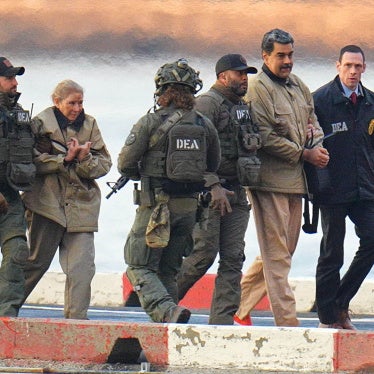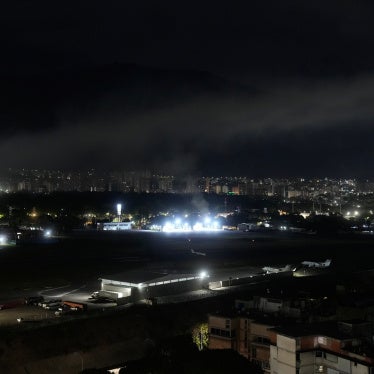There is a place in this hemisphere where people vanish without a trace. Fear is so pervasive that few are willing to meet publicly with international human rights investigators. It is as large as Switzerland, but ruled by the gun.
That place is the zone ceded by the Colombian government to the Revolutionary Armed Forces of Colombia-People's Army (FARC), Latin America's oldest and largest insurgent group. In November 1998 Colombian President Andres Pastrana ceded to the rebels five municipalities in southern Colombia, hoping to further talks aimed at negotiating an end to decades of armed conflict.
International attention has focused primarily on human rights abuses committed by right-wing paramilitaries, which operate with the tolerance and even open support of units in Colombia's military. Acting with impunity, paramilitaries commit gross atrocities in Colombia and are responsible for most civilian massacres.
But guerrillas also deserve condemnation for the barbarity that is sweeping Colombia. Prior to withdrawing soldiers and police, Colombia's leaders did nothing to establish mechanisms to protect the rights of the estimated 90,000 residents of the zone. Guerrillas forced out employees of the attorney general's office, who would normally investigate and prosecute allegations of crimes.
So far, the Colombians living in the zone have paid a high price for these mistakes. During a mission to the zone in May and June of 2000, Human Rights Watch gathered evidence showing that the FARC has abducted and threatened residents, committed extrajudicial executions and recruited children for combat.
One of the most dramatic cases involved a teenager, Guillermo Lombana Lizcano. According to his family, Lombana was abducted by the FARC on April 16, 1999, in front of his home in San Vicente del Caguan, the unofficial capital of the zone and its most populated urban center.
His father, also named Guillermo, said that the family watched as guerrillas seized the boy. "My son went out to talk to a friend, and they were waiting for him. Two of them grabbed him while one stood aside. They put him in a taxi. We ran outside because friends had yelled, 'Look, they're taking your boy!' We hadn't had any threats from the FARC. We never had any kind of problem with them. It was a surprise." Since then Lombana has searched doggedly, but guerrillas have never told him what happened to his son.
Cases such as Lombana's would qualify as forced disappearances under international human rights law if they were carried out by government officials or groups acting with government support. But the fact that these abuses do not qualify at the moment as a violation of specific human rights treaties should not lead to any confusion about their nature. These abductions are serious violations of international law and should spur international outrage.
Outside the zone, the FARC is equally abusive. Last year human rights groups reported that rebels killed 496 civilians nationwide, many accused of being members of the paramilitary or army sympathizers.
Guerrillas continue to kidnap for ransom, seizing 701 people in 2000 alone. Some victims are elderly. Some are in diapers. According to the United Nations High Commissioner for Human Rights, among those held hostage by the FARC in 2000 were Andres Felipe Navas Suarez, 3, and Clara Olivia Pantoja, 5, both seized from their parents in Bogota and taken to the zone until their families paid a ransom for their release.
In June and July, FARC made headlines by releasing 350 police and soldiers, some it had held for more than three years. Although this was a positive step, the release also underscored the desperate conditions in which these men had been kept -- without adequate shelter, medical care or clean water.
In a few cases, international pressure has led FARC to acknowledge responsibility for certain gross violations and to announce that it will sanction the perpetrators. For example, during our visit to the zone, FARC commanders told Human Rights Watch that the two FARC combatants who killed American civilians Terence Freitas, Lahe'ena'e Gay and Ingrid Washinawatok on March 5, 1999, had been found "guilty." The FARC sentenced the two killers to dig 55 yards of trenches and clear land, an absurd punishment for so grave a crime.
In October, Pastrana will decide whether to renew the zone, which he may do to further peace negotiations. Before he does, it is imperative that effective measures be taken to ensure the protection of the zone's residents. For its part, FARC should make a public commitment to permit a system of independent national and international monitoring within the zone and to respect basic humanitarian law standards.
Colombia remains the recipient of several hundred million dollars in U.S. aid, a significant portion of which will fund a military that has ties to paramilitary organizations. The international community rightly continues to focus on paramilitary violations. But the grave abuses committed by the guerrillas deserve no less attention.








